#unequal cellophane bee
Text
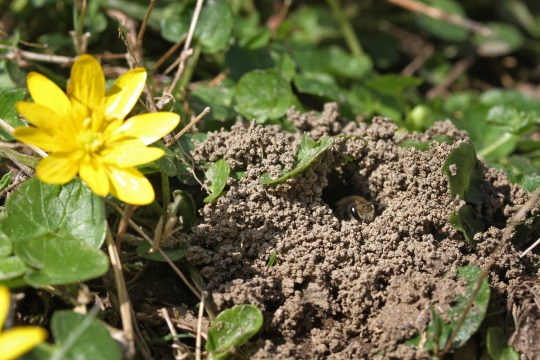
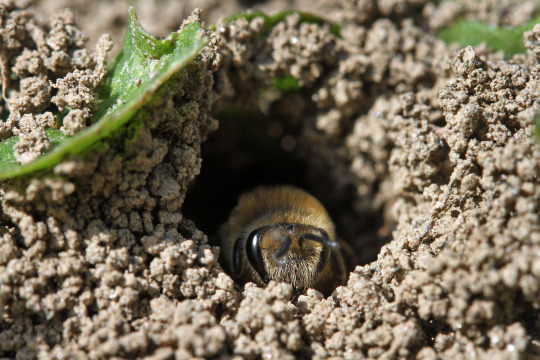
Ground-nesting bee time! (Well, all the warm months are, but I see them mostly first thing in the spring before everything grows in.)
Unequal Cellophane Bee female in her nest (Colletes inaequalis)
March 13, 2024
Southeastern Pennsylvania
#bee#bees#photographers on tumblr#bugs#bug#bugblr#unequal cellophane bee#Colletes inaequalis#entomology#insects#insect#nature#beeblr#animals#wildlife photography
1K notes
·
View notes
Photo


Unequal cellophane bee covered in blue pollen from a Scilla flower. (2022/04/30)
46 notes
·
View notes
Text

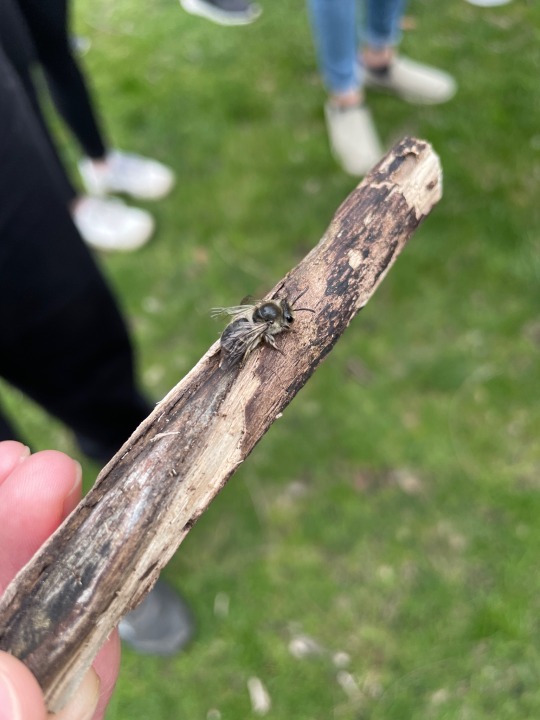

The ground nesting bees have decided the weather is good enough to make an appearance. If you see these lil gals, please let them be(e)! They’re very unlikely to sting (I’ve bothered them so much, no stings) and are great for native plants! iNaturalist suggests to me these particular bees are the unequal cellophane bee, Colletes inaequalis.
#photo#entomology#bees#cute#cute animals#insect photography#insect#bee#arthropod#invert#their little faces when they poke out of nest 😭#bugblr
25 notes
·
View notes
Photo

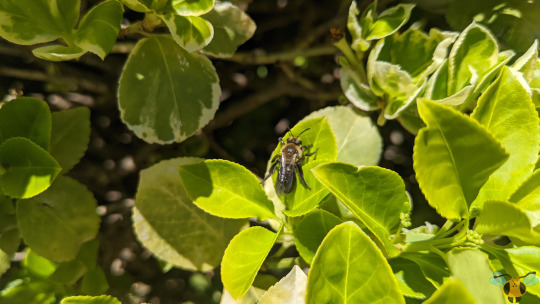



Dunning's Miner Bee - Andrena dunningi
With a few days of sunshine and gentle winds, it’s finally beginning to feel like spring over here in Toronto. With springtime around, the flowers have opened, the greens are growing, and many prominent insects begin to make themselves known. Time for me to go outside! While tending to the front and back yards (and checking for dandelions), I was greeted by 2 distinct Bees flying around in search of flowers or mates: The Eastern Bumblebee and the Carpenter Bee. I’ll wager their numbers will pick up as they establish colonies and homes respectively, and come summer when many more flowers open, they’ll be out to forage for their families. While these are the largest Bees you might see, there are several smaller, solitary Bees that also emerge from an overwinter to build nests and search for food. The Dunning’s Miner is one such Bee. I haven’t seen any yet this year, but the last few years they have been spotted near flowers in my neighborhood. Or at the very least, a Bee very similar to it; Andrenidae (and genus Andrena) Bees can be tough to identify without looking at them very closely. Dunning’s Miner is well known and wide-ranged, so it’s the best chance we have to discuss this family of insects. The description below may sound similar to the Unequal Cellophane Bee’s description (different Bee family), but it’s worth it to share again.
These Andrenid Bees make their homes in soil and sand, digging a column with side chambers to store the next generation of Bees and the pollen that the mothers gather as provisions. Though a solitary species, they can nest close to one another if there’s enough room to go around. The Cellophane Bees apparently nest in larger aggregates and (as can be determined from even a pictures) are larger than Andrenids, which helps to identify them if you happen to find some Bees near holes in the ground. Strange, but true to know that Bees can live comfortably in the ground, as we usually expect Bees to live in tree hollows or wooden cavities. They do live there of course, but underground living is more common than you may expect (even Bumblebees live underground). Nevertheless, whether in the ground or a tree, the hardworking Bees get to work providing for their young while simultaneously pollinating the flowers they visit. Dunning’s Miner is reported to be a generalist; feeding and visiting on many flowers. While Bumblebees may have more longevity (due to their colony structure) for pollination, Miner Bees can help get things going for the first wave of spring flowers! Enjoy these Bees while you can as they bow out gracefully after June, although other Andrenid Bees keep to a different schedule. Keep that in mind, as timeframe will help you identify what visitors come to your garden. Bless the Bees! Especially the mother Bees!
Pictures were taken on May 3, 2020 with a Google Pixel 4.
#jonny’s insect catalogue#ontario insect#bee#dunnings miner bee#dunning's miner#miner bee#andrenidae bee#insect#hymenoptera#may2020#2020#toronto#entomology#nature#invertebrates
3 notes
·
View notes
Text
@abstracttheworld submitted: This is that ground bee I was talking about before! :D I live in virginia btw.
What a cute bee! I don’t remember the context or if you had a question so I will just say it’s a very adorable bee friend :)
And also if you had asked for an ID, it looks like a cellophane bee, proooobably Colletes inaequalis.
66 notes
·
View notes
Photo
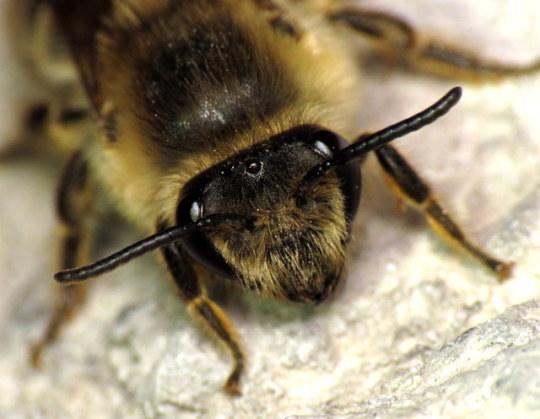
Bug of the Day
Look at the fuzzy face on this little Unequal Cellophane Bee (Colletes inaequalis) I found at my porch light the other night. So sweet!
Thanks to John S. Ascher for the id.
Update: @inverte-brat asked about the origin of the name “unequal” cellophane bee. I did some googling and was not able to figure it out. I did find out that they are called cellophane bees because of a clear, plastic-like substance they produce that they use to coat the walls of their underground nests, in order to keep them dry.
#unequal cellophane bee#Colletes inaequalis#Colletes#Colletidae#Hymenoptera#insect#bee#cellophane bee
224 notes
·
View notes
Photo

Unequal Cellophane Bee (Colletes inaequalis)
1 note
·
View note
Text


First native bee of the year! And pollen covered as a bonus. I'm very happy.
Unequal Cellophane Bee (Colletes inaequalis)
February 27, 2024
Southeastern Pennsylvania
#bugs#bug#photographers on tumblr#bugblr#bee#bees#unequal cellophane bee#Colletes inaequalis#entomology#insects#insect#nature#wildlife photography#animals
609 notes
·
View notes
Text

What do you think she's announcing from her little lilac podium?
Unequal Cellophane Bee (Colletes inaequalis)
April 9, 2024
Southeastern Pennsylvania
#bee#bees#photographers on tumblr#unequal cellophane bee#bugs#bugblr#bug#Berber#entomology#insects#insect#nature#Colletes inaequalis#animals#wildlife photography
370 notes
·
View notes
Text

Went bee hunting today and was not disappointed.
Unequal Cellophane Bees (Colletes inaequalis)
March 12, 2024
Southeastern Pennsylvania
#bee#bees#photographers on tumblr#unequal cellophane bee#cellophane bees#Colletes inaequalis#bugs#bug#bugblr#entomology#insects#insect#nature#animals#wildlife photography#beeblr
267 notes
·
View notes
Text

Unequal Cellophane Bee (Colletes inaequalis)
March 15, 2024
Southeastern Pennsylvania
#On a sunny day in spring you will often find me lying in the dirt next to bee nests#bee#bees#photographers on tumblr#unequal cellophane bee#colletes inaequalis#bugs#bug#bugblr#entomology#insects#insect#nature#animals#wildlife photography
163 notes
·
View notes
Photo


My favorite sign of impending Spring, the first ground-nesting bee nest of the year!
Unequal Cellophane Bee, female (Colletes inaequalis)
March 5, 2023
Southeastern Pennsylvania
#bee#bees#photographers on tumblr#Colletes inaequalis#unequal cellophane bee#beeblr#bug#bugs#insect#insects#bugblr#It's so good to be shooting with a working camera! Thank you!!#entomology#nature#animals
373 notes
·
View notes
Text



Is it weird that my Spring happy place is lying on a sunny south-facing slope surrounded by dozens of bee nests?
Unequal Cellophane Bees (Colletes inaequalis)
Females emerging from their nests, and males (in center photo) waiting for a female to emerge from her nest.
Early Spring 2023
Southeastern Pennsylvania
#bee#bees#photographers on tumblr#beeblr#unequal cellophane bee#Colletes inaequalis#hymenoptera#bug#bugs#bugblr#insect#insects#entomology
179 notes
·
View notes
Photo

A male bee, to pair with the female in her personal nest that I posted earlier in the week.
Unequal Cellophane Bee (Colletes inaequalis)
March 6, 2023
Southeastern Pennsylvania
Temps are going to be below average for the next week, so may be a while before I see these guys again.
#bee#bees#photographers on tumblr#Colletes inaequalis#unequal cellophane bee#beeblr#animals#nature#flowering apricot#flowers#spring#entomology
113 notes
·
View notes
Text


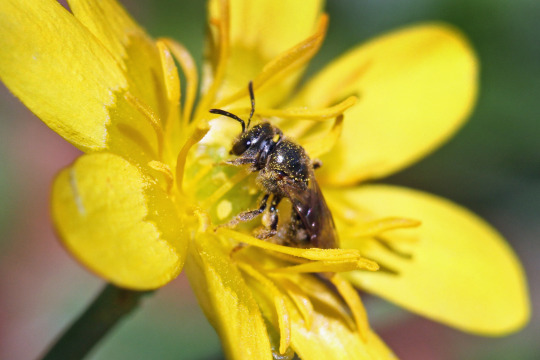
Native bees on Lesser Celandine (Ficaria verna)
Unequal Cellophane Bee (Colletes inaequalis)
Carlin's Mining Bee (Andrena carlini)
Metallic Sweat Bee (Lasioglossum sp.)
March 26, 2023
Southeastern Pennsylvania
99 notes
·
View notes
Photo

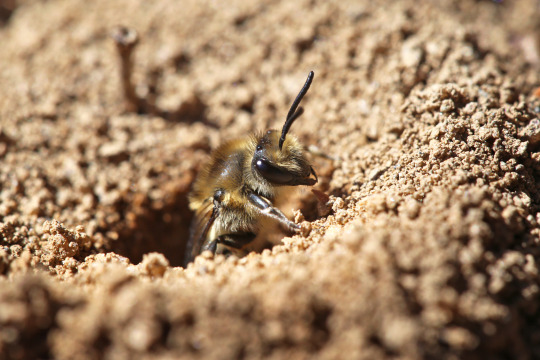

Ground-nesting bees!
Unequal Cellophane Bees (Colletes inaequalis)
March 16, 2022
Southeastern Pennsylvania
#bee#bees#photographers on tumblr#bug#bugs#insect#insects#unequal cellophane bee#ground nesting bees#spring#bugblr#nature#Colletes inaequalis#entomology
2K notes
·
View notes